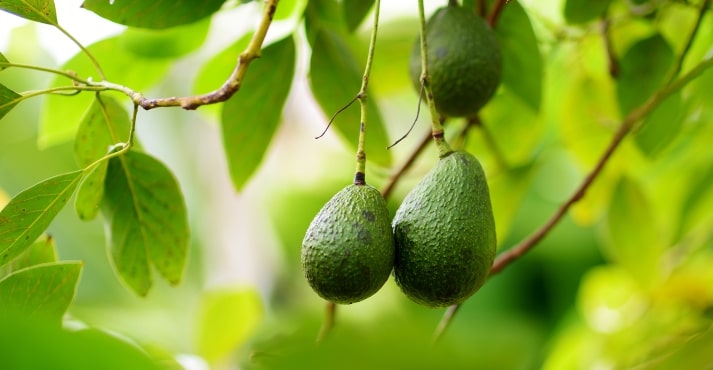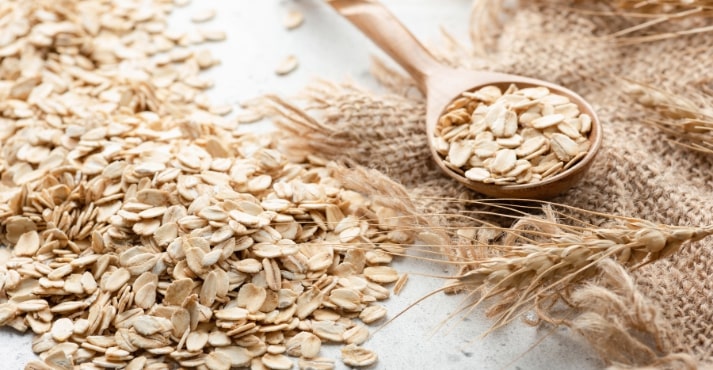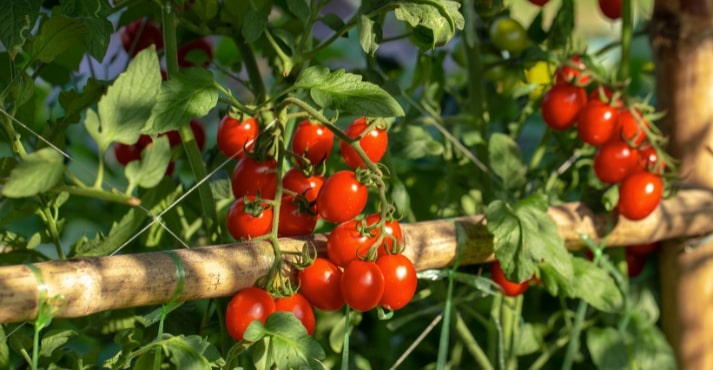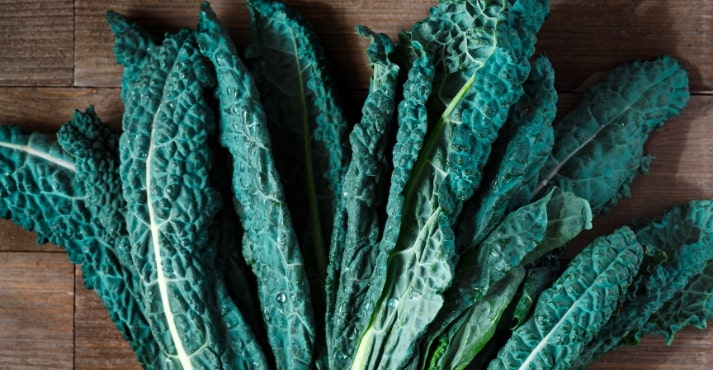Sustainability has long been a buzzword, and it has never been more critical for individuals and businesses to translate the word into action.
Therefore, the choices about what to eat extend far beyond price and taste, with sustainable foods emerging as an essential consideration for our dietary decisions.
According to FAO, one-third of global greenhouse gas (GHG) emissions come from food. Yet, amidst this challenge lies an opportunity for change. Sustainable foods are generally healthy and have a low environmental impact.
A transition to a sustainable foods list when making food choices without giving up on your dietary requirements will help make a positive change and save the planet. Consumers and food manufacturers can create a sustainable agricultural system that nurtures the environment and well-being by opting for organic products.
Read on to explore the 15 most sustainable food options and find out how they can make the change.
1. Avocados

Avocados are a fruit that grows on avocado trees (Persea americana), native to Central America and Mexico. They are also packed with healthy fats, vitamins (K, C, E, and B6), minerals (potassium and folate), and dietary fiber.
Avocados are a delicious, versatile ingredient in cuisine. They are a classic staple on toast, in salads, and, of course, as guacamole.
Avocados are among the most sustainable foods, offering environmental benefits such as reduced pesticide use and biodiversity preservation. Avocados consist of vitamins, high concentrations of potassium and magnesium, unsaturated fatty acids, and plant proteins.
According to a research study of superfoods (plant-based), compared to meat, the water footprint of avocados is significantly less.
Using techniques like drip irrigation, smart composting, reforestation, and working with the natural climate can further reduce the water consumption for growing avocados and ensure they are sustainably grown at socially responsible farms.
Avocados have a low land yield and are grown in monocultures but don’t harm the environment. Organic farms that cultivate avocados minimize chemical runoff by avoiding synthetic pesticides and fertilizers and protecting waterways and aquatic ecosystems.
2. Quinoa

Quinoa (pronounced keen-wah) is a highly nutritious, gluten-free pseudocereal originating from the Andean region of South America. Despite its grain-like appearance, quinoa is technically a seed harvested from the flowering plant Chenopodium quinoa.
Quinoa is often used in flexitarian diets and is considered a nutritional powerhouse packed with protein, fiber, and essential nutrients. As a gluten-free grain, it offers a versatile and sustainable alternative for those with dietary restrictions.
Quinoa has been recognized as a climate-resilient crop and requires minimal water to thrive, making it a significantly more eco-friendly choice than other protein sources. Quinoa can tolerate drought and salt much more than most other plants.
Quinoa is a plant food that is less resource-intensive and thus produces a lower carbon footprint. Its adaptability to diverse climates and minimal water requirements make it an ideal crop for sustainable agriculture.
3. Blueberries

Blueberries are small, dark blue superfruits with a mildly tart taste. Blueberry has been classified as a healthier food that has a high nutritional content of nutrients, vitamins, and minerals.
They are filled with antioxidants, with several health benefits that can improve your brain, heart, and muscle health.
Blueberries also require less water compared to other crops, reducing water usage. Their perennial nature means they don’t need replanting yearly, conserving resources. Organic blueberry farming employs eco-friendly practices to protect the environment.
Instead of synthetic pesticides and fertilizers, organic farmers use natural methods to control pests and enhance soil fertility. Choosing sustainably grown blueberries supports a healthier environment and ensures the availability of this delicious and nutritious fruit for future consumption.
4. Oats

Oats are whole grains rich in fiber, protein, and essential nutrients like iron and magnesium. They offer several health benefits, including improved heart health, digestion, and weight management.
Oats are also versatile, easy to prepare, and can be incorporated into various dishes for a nutritious boost.
According to Statista, the global production volume of oats amounted to approximately 25.13 million metric tons in 2023 and is expected to increase further.
Oats also contain protein, necessary for muscle repair and growth, and essential nutrients like iron, magnesium, and B vitamins. Additionally, oats are a good source of antioxidants, which help protect cells from damage caused by free radicals.
According to a research study, oats have the potential to replace foods, including animal products, due to their minimal carbon footprint and significant health advantages.
Oats are hardy crops that thrive in various climates, requiring less water than other grains. They also have a relatively short growing season and can be cultivated without synthetic pesticides or fertilizers, reducing chemical inputs.
5. Pulses

Pulses are sustainable food sources, encompassing beans, lentils, and chickpeas. Pulses are vegan-friendly foods with excellent protein, fiber, vitamin, and mineral sources.
Pulses can grow in impoverished soils. Organic pulse cultivation focuses on soil health, employing crop rotation and minimal tillage to enhance soil fertility and structure. These methods reduce erosion and promote biodiversity, creating a resilient ecosystem.
Pulses conserve water by utilizing rainwater efficiently and reducing reliance on irrigation. The absence of harmful chemicals also minimizes water pollution and preserves aquatic ecosystems.
Choosing organic pulses as eco-friendly food supports a sustainable food system that nurtures people and the planet, ensuring the availability of nutritious and environmentally friendly food.
6. Organic Tomatoes

Organic tomatoes are cultivated without synthetic pesticides, herbicides, or fertilizer. They have a rich nutritional profile, with vitamins C and K, potassium, and antioxidants like lycopene.
They come in various colors, including red, yellow, orange, and even purple, with different sizes and shapes depending on the variety.
Due to their ripening, organic tomatoes often exhibit a fuller, more vibrant taste than conventionally grown varieties.
Tomatoes are an organic food that requires relatively low amounts of water and fertilizer compared to other crops, making it a more sustainable choice. Moreover, they can be grown using organic and regenerative practices, which benefit the environment.
7. Broccoli

Broccoli is a green vegetable belonging to the cabbage family, Brassicaceae. It is characterized by its dense clusters of green flower buds attached to a thick, edible stalk.
Broccoli is rich in vitamins, particularly vitamin C and vitamin K, fiber, and various antioxidants. It is commonly consumed cooked or raw and is prized for its nutritional value and potential health benefits.
To avoid waterlogging, Broccoli typically requires about 1 to 1.5 inches of water per week, preferably from rainfall or drip irrigation. It thrives in well-drained, fertile soil rich in organic matter with a pH between 6.0 and 7.0.
Sustainable broccoli cultivation focuses on water conservation through efficient irrigation practices and soil management techniques like mulching to retain moisture.
Moreover, sustainable farming methods prioritize soil health by avoiding synthetic pesticides and fertilizers, promoting biodiversity, and reducing soil erosion.
Food manufacturers and farmers employ sustainable farming practices for broccoli production, such as crop rotation, integrated pest management, organic fertilizers, and no-till farming. These methods enable sustainability, promote soil health, reduce chemical inputs, and support biodiversity.
8. Mushrooms

Mushrooms are fungi that belong to the kingdom of Fungi. They come in various shapes, sizes, and colors, some edible and others poisonous.
Edible mushrooms are commonly used in cooking due to their unique flavors and textures. Depending on the species, they can range from mild to earthy or even meaty in taste. Mushrooms are versatile and can be used in various dishes, including soups, stir-fries, salads, and pasta dishes.
Mushrooms are low in calories and fat yet high in nutrients like protein, vitamins (D and B), minerals (potassium and selenium), and antioxidants. Additionally, certain mushrooms have medicinal properties and are used in traditional medicine.
Mushrooms can be cultivated in a controlled indoor environment using waste products like sawdust, straw, and agricultural byproducts.
Their ability to thrive in controlled environments means they require minimal land and water compared to traditional crops, reducing the pressure on natural ecosystems and mitigating deforestation.
Moreover, their unique ability to grow on organic waste materials, such as agricultural residues or compost, not only diverts these materials from landfills but also transforms them into valuable and nutritious food.
This efficient use of resources makes mushroom cultivation a sustainable and environment-friendly practice.
9. Organic Kale

Kale is a leafy green vegetable from the Brassica family, including cabbage, broccoli, and Brussels sprouts. It is renowned for its flavor and nutritional benefits, rich in vitamins (such as vitamins A, C, and K), minerals (like calcium and magnesium), antioxidants, and dietary fiber.
Kale is considered a sustainable option due to its relatively low water and land requirements compared to other crops. Kale typically requires around 20-30 inches of water per growing season, significantly lower than water-intensive crops like rice or almonds. Also, kale can be densely planted, allowing for efficient land use and maximizing yield per acre.
Pesticide-free farming reduces environmental pollution and preserves beneficial insects, enabling sustainable agriculture. Its cultivation using sustainable practices provides a nutritious leafy green option and contributes to a healthier environment and a more sustainable food system.
10. Organic Apples

Apples are fruits that grow on apple trees (Malus domestica), which belong to the Rosaceae family. They are among the most widely cultivated and consumed fruits globally, with thousands of available varieties. They are typically eaten fresh but are also used in cooking, baking, and juicing.
As one of the most consumed non-GMO foods, apples are rich in vitamins (especially vitamin C), dietary fiber, antioxidants, and minerals like potassium. They offer several health benefits, including improved heart health, digestion, and immune function.
According to research by the Soil Science Society of America Journal, farmers are becoming more aware of the environmental impacts of different apple orchard management practices. Farmers could reduce the fertilizer needed to provide nutrients for apple trees by applying compost.
Adding compost to a farm’s nutrient management plan reduces the dependence on non-renewable sources. Moreover, it provides a sustainable use for waste materials, resulting in an environmentally friendly apple cultivaton.
11. Seaweed

Seaweed, also known as marine algae, is an aquatic plant that grows in marine or freshwater environments. Seaweed is crucial in marine ecosystems, providing habitat and food for various marine organisms.
According to research, between 75 and 85% of worldwide seaweed production is used for direct human consumption in Asia. Seaweed is rich in vitamins, minerals (such as iodine and calcium), antioxidants, and dietary fiber, making it a nutritious and sustainable food source.
Moreover, seaweed cultivation can have environmental benefits, such as absorbing carbon dioxide and improving water quality. Seaweed cultivation requires no fertilizers, as seaweed can utilize nutrients naturally in the water.
As seaweed grows, it absorbs carbon dioxide dissolved in seawater, reducing greenhouse gas levels and mitigating ocean acidification.
Furthermore, seaweed cultivation can improve water quality by filtering excess nutrients and pollutants from the surrounding water, promoting ecosystem health.
12. Carrots

Carrots are a commonly eaten vegetable. They are typically orange, although they can also be found in other hues like purple, yellow, and white.
Carrots are a climate-friendly food that is a cool-season crop that is always directly seeded. Carrots have a crunchy texture and a sweet, earthy flavor. They are rich in vitamins, particularly vitamin A (in the form of beta-carotene) and vitamins C, K, and B6.
Carrots have a relatively low carbon footprint compared to other vegetables. Also, vegetables tend to produce far fewer carbon emissions than other types of food, making carrots a highly sustainable food choice. According to the Environmental Working Group (EWG), carrots earn a low to moderate pesticide residue score.
Another research study indicated that contrary to expectations, organically grown carrots had, on average, 14.5% higher yield and 10% lower discarded yield compared to conventionally grown carrots. Organic carrot farming prioritizes sustainability, minimizes chemical use, mitigates environmental pollution, and preserves biodiversity.
13. Berries (Mixed)

Berries are small, juicy fruits that typically develop from a single ovary surrounded by edible flesh. Examples include strawberries, blueberries, raspberries, and blackberries. Berries are highly perishable and susceptible to spoilage, resulting in significant food and economic losses.
Berries are sustainable food products packed with vitamins, minerals, antioxidants, and dietary fiber, promoting health and well-being.
Berries are known for their anti-inflammatory and antioxidant properties, which may help reduce the risk of chronic diseases such as heart disease, diabetes, and cancer. Regular consumption of berries is associated with improved cognition, skin health, and immune function.
Strawberry is a crop already cultivated commercially, using soilless methods, making it suited to the technological approach.
Cultivating organic mixed berries offers collective benefits, such as supporting biodiversity through natural farming methods. Organic farming reduces environmental impact, preserves soil health, and promotes ecosystem resilience.
14. Upcycled Foods

In a study published in the Food & Beverage Insider, according to Ecovia Intelligence, consumers are attracted to upcycled foods as they become more aware of the impacts of food losses and waste.
In the U.S., more than 6 billion pounds of produce is unharvested or unsold for aesthetic reasons. About 28% of agricultural land goes to food that is never eaten, while food waste & loss generate 4% of greenhouse gases in the U.S. alone.
Upcycled foods refer to products made from ingredients that would have otherwise gone to waste. These ingredients are repurposed or “upcycled” into new food products, reducing waste and resources more efficiently.
As per the International Food Additives Council (IFAC), upcycled foods are:
- Made from by-products or ingredients that would have otherwise gone to waste
- Value-added products
- Have an auditable supply chain
- Safe for human consumption, but can also be used in animal feed, pet food, and cosmetics.
According to a research study on upcycled food, grape pomace increased the antioxidant content and nutritional profile of 3D-printed cookies made from broken wheat, which would have otherwise been sent for animal feed.
Therefore, the upcycled food industry could gain marketing opportunities by improving the nutrient composition of an end product; for example, when a proportion of wheat flour is replaced with upcycled sunflower flour, muffins have increased levels of insoluble fiber, protein, mineral content, and antioxidants.
Furthermore, sustainable packaging from upcycled food materials uses biodegradable or compostable packaging from agricultural byproducts or food waste.
For example, packaging made from discarded fruit peels, vegetable fibers, or coffee grounds can be composted after use, reducing the environmental impact compared to traditional plastic packaging.
15. Sweet Potatoes

Sweet potatoes are root vegetables belonging to the Convolvulaceae family. Sweet potatoes come in various colors, including orange, purple, and white, with a sweet and starchy flavor. They are rich in vitamins (especially vitamins A and C), minerals (such as potassium and manganese), and dietary fiber.
Sweet potatoes have a shallow carbon footprint compared to other vegetables. Organic farmers employ natural crop rotation and composting without synthetic pesticides and fertilizers to enrich soil fertility and minimize erosion.
Organic sweet potato farming preserves biodiversity and reduces environmental pollution by minimizing chemical use. Through these sustainable approaches, organic sweet potato farming ensures a healthier planet for present and future generations.
Conclusion
It has become clear that this climate change results from human activity, and current consumption and production rates will worsen access to food and beverages, posing a more significant global challenge.
From minimizing greenhouse gas emissions to conserving water resources and preserving ecosystems, the power of sustainable food choices cannot be overstated.
Managing irrigation to reduce runoff is another practice that helps prevent soil erosion. Sustainable farming reduces pollution by using natural fertilizers and using fewer chemicals.
Therefore, making conscious choices about the sustainable foods we eat can impact our planet’s health, reduce our environmental footprint, support biodiversity, and promote ethical agricultural practices.












